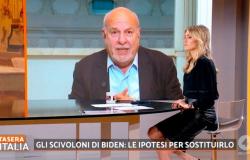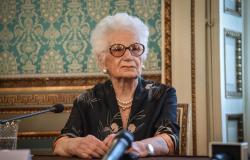When a young patient suffering from a rare disease receives a treatment that restores hope, the celebration with the cake and candles certainly doubles every year. «We celebrate two birthdays: in January, for the date of birth of my daughter Giorgia, and then in February», says Antonio. And she can finally say it with a smile, because the little Roman girl, who turned 9 this year, is doing well thanks to the gene therapy she underwent in 2016 at Tiget, the San Raffaele Telethon Institute in Milan. “Actually, the father admits – after a while you live a normal life, as if nothing had happened.” Yet the pathology that Giorgia was diagnosed with, metachromatic leukodystrophy (MLD), does not bode well if not treated early. It is in fact a progressive neurodegenerative disease, and affects approximately 1 child in 100,000. «We discovered it thanks to her older sister, Sofia, who began to have signs of the disease that were not easily interpretable – recalls Antonio. The little girl moved as if she had a slight motor delay, she walked unsteadily, a little ‘swinging. But the only obvious physical symptom she had was the fact that one of her two eyes had become convergent overnight.”
And so Antonio, together with his wife Roberta, begin to worry. “The diagnosis was given to us at the Bambino Gesù pediatric hospital. Then everything happened so quickly that we didn’t even have time to realize it.” In fact, doctors discover that both parents are healthy carriers. And that Giorgia also has the same illness as her older sister. «I found out on the phone from my wife who was in hospital at the time. I didn’t know what to think, admits Antonio. Luckily for Giorgia there was the hope of a gene cure at Tiget in Milan. The older child, however, could not access this therapy because she was now symptomatic, but she is still receiving other treatments that slow down the disease.”
«HEALTHY CARRIERS»
As Telethon explains, gene therapy for MLD has been shown to preserve motor function and cognitive abilities in the majority of patients as long as it is administered in a timely manner. «My wife and I didn’t know we were healthy carriers, Antonio remarks. To find out, specific checks are needed». The timeliness of the diagnosis therefore allowed Giorgia to celebrate a second birth. But thanks to neonatal tests, many other children will now also be able to receive treatment early: in fact, a pilot study has been launched in Lombardy for the free screening of around one hundred thousand newborns; promoted by the Telethon Foundation thanks to an agreement with the Buzzi Children’s Hospital Foundation, it will last 30 months and will be coordinated by the “Vittore Buzzi” Children’s Hospital in Milan.
To identify metachromatic leukodystrophy, a blood sample taken from the heel of each newborn in the first three days of life will be enough.
THE FIRST EXPERIMENTATION
In Italy, the first region to start screening for MLD was Tuscany in 2003; it is coordinated by the Meyer University Hospital of Florence and also financed thanks to the Voa Voa Amici di Sofia Association. The Lombard study will use the same protocol. «The data collected in the two Italian regions – explains coordinator Cristina Cereda, head of the newborn screening program at the Buzzi Hospital – will thus be perfectly comparable, an important aspect with a view to introducing the test throughout the country in the future. Given the severity of the disease, it is essential to minimize false positives so as not to create unnecessary anxiety in parents, but also false negatives, to offer the possibility of gene therapy to all those children who could potentially benefit from it.” Newborns who test positive even after confirmatory genetic tests will be referred to the San Raffaele Hospital in Milan.
«Faced with the extraordinary path that led from the first studies in the laboratory, over 25 years ago, to the approval of gene therapy as a drug first in the European Union and, recently, also in the United States, declared Celeste Scotti, director of Research and Telethon development – we cannot forget all those children who could not be offered this treatment. Here, we would like to ensure that as soon as possible no one is left behind and newborn screening would be an indispensable tool in this sense.”
© ALL RIGHTS RESERVED
© ALL RIGHTS RESERVED
Read the full article at
The messenger





